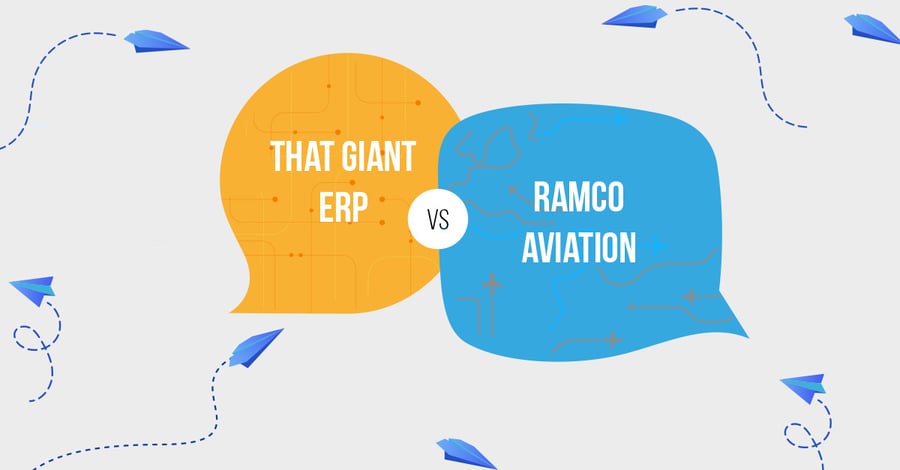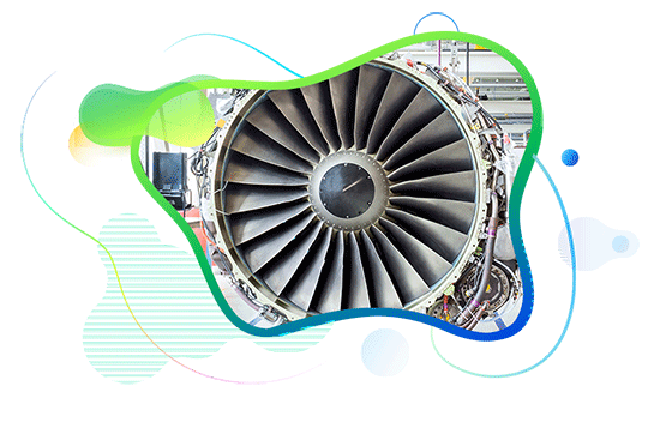

Reflecting on all the sales calls I had this past year, I would rate the conversation I had with one of the largest MROs in the industry as most intriguing conversation. Below are some of the snippets from that conversation.
Prospect: Your software seems to be more than an MRO software. Is your product similar to ‘That giant ERP’? (Name intentionally masked for this post)
Me: Yes, we are an ERP software but Aviation specific ERP built ground up for aviation and defense industries.
Prospect: how different is your software from ‘That giant ERP’?
Me: Some of the traditional ERPs are great for manufacturing related businesses, however specialized industry like Aviation where you have various segments like #CAMO MRO Airline M&E departments have unique operations that require specialized aviation software covering the whole gamut of functions such as Configuration Management, Engineering, Maintenance, Supply Chain, Safety Compliance, MRO & Part Sales, flight operations etc require aviation specific software to address these specific functions seamlessly. Ramco’s core platform has unique features that addresses these needs.
Prospect: Sounds good, but tell me USPs of Ramco over ‘that giant ERP’?
Me: Quite of few but some highlights
- One-stop-shop for all aviation needs: Unlike the giant ERP system, that requires to be customized heavily to suit the requirements of aviation functions, a native aviation ERP provides the flexibility, scalability and agility that are needed to run Aviation functions from a single solution
- Native Mobile capabilities: Mobile applications help in increasing utilization rates of hangars and shops and productivity of teams. We have developed mobile apps for different user roles and nearly 80% of MRO functions can be done on a mobile device. Traditional ERP mobile apps lack comprehensiveness and require a lot of configurations making it a cumbersome task.
- Advanced Supply chain capabilities: The level of complexity in managing the supply chain of Aviation varies based on the type of ownership- owned inventory, pooled inventory, loans and exchanges; and the type of aircraft – fixed-wing or rotary. The ERP system should provide inventory visibility of parts across the organization, globally, with information on the condition of parts (whether it is new, serviceable, overhauled, or unserviceable) and movement of parts. This is seamless with Ramco
- Digitization: There is a common consensus in the industry that digitization can be leveraged as a strategic tool to achieve exponential growth. Digitization is not just limited to going paperless which is, of course, a key aspect of the journey but also includes ecosystem interface such as OEM interface for seamless data exchange, augmenting the PDF task cards of AMM, EMM, CMM, or custom task cards with the skill attributes, Text Controls, Numeric controls for digitized work execution, and the ability to transform the PDF work package into digitized task card/content and many other aspects which collectively help in reducing TAT and high revenue realization
All this is possible with an effective Aviation ERP system with native capabilities
Prospect: Sounds good! We should go for next steps probably with an onsite demo at our office
Me: Thank you
PS: Over the years, I have seen Aviation industry largely stuck in legacy systems incurring huge costs of ownership, manual interventions, lack of automation. While the frontend of industry looks jazzy, backend seems to be behind in advancement of tech compared with other industries. While the realization of this fact is growing in the industry, but a significant portion of industry players still mulling over moving to advanced systems. This blog is just an attempt to share what aviation specific ERPs can do to them.
For any clarifications or further information, please reach out to us at contact@ramco.com
Frequently Asked Questions (FAQs)
Enterprise asset management (EAM) involves the management of mission critical assets of an organization throughout each asset's lifecycle. EAM is used to plan, optimize, execute, and track the needed maintenance activities with the associated priorities, skills, materials, tools, and information. The aim is to optimize the quality and utilization of assets throughout their lifecycle, increase productive uptime and reduce operational costs.
Enterprise asset management (EAM) involves the management of the maintenance of physical assets of an organization throughout each asset's lifecycle. EAM is used to plan, optimize, execute, and track the needed maintenance activities with the associated priorities, skills, materials, tools, and information.
The software helps in effective maintenance of assets through preventive, predictive, shutdown and breakdown maintenance strategies. The system also helps enterprises mitigate equipment risks by enhanced safety standards. The streamlined operations and improved asset performance helps organizations increase their investment effectiveness.
EAM is important because it helps organizations track, assess, manage and optimize asset quality and reliability. Asset intensive Organizations have hundreds, thousands, even millions of assets which needs to be maintained to maximize / optimize life of these assets to increase the return on investment.
The key features of effective EAM are:
- Work management.
- Maintenance Strategies (Preventive/ Predictive / Breakdown / Shutdown).
- Planning and scheduling.
- Supply chain management.
- Health and safety.
- Mobility.
- Analytics.
- Improved Asset Health at reduced cost through data driven maintenance Programs
- Complete visibilityon entire maintenance data across Equipment, across Models, across Branches to aid in analysis & decision making such as to Repair or Replace the Equipment
- Insightful analysis of Inspection Data to improve customer satisfaction
- Effective maintenance management enhanced by predictive maintenance and inbuilt analytics
- Increased reliability and safety, keeps complete track of all the inspections & calibration schedules
- Mobile Application enables users to execute work while “in the field” leading to minimized non-productive time and increased productivity and reduces duplication of work and human errors in recording information.
- Quick turnaround time through Actionable Notification & Alerts for every process in real time and accessible anytime and anywhere.
- Improved Regulatory Part of asset management involves the implementation of better O&M practices, which can significantly improve compliance.
Asset Intensive companies under the following Industries :
- Ports
- Cement and Mining
- Utilities
- Fleet Maintenance
- Equipment Rental
- Other Manufacturing
- Real Estate & Infrastructure
- Power Generation
Contact us for a meeting and schedule a demo
This differs on case to case basis, based on the type of installation and unique industry specific requirements. Contact us for a meeting and schedule a demo.
This differs on case to case basis, based on the type of installation and unique industry specific requirements. Contact us for a meeting and schedule a demo.
Stay Connected, follow us on LinkedIn / Twitter to know more about EAM Software latest trends.

Prakash Babu Devara is Head of Aviation Marketing at Ramco Systems, bringing over 15 years of experience in marketing and branding. With a passion for aviation and technology, he is dedicated to bringing the best of both worlds together to drive value proliferation. Prakash has a proven track record in developing and implementing effective marketing strategies, building strong brands, and driving business growth. In addition to his role at Ramco, he is an aviation blogger and a seasoned public speaker known for communicating complex ideas clearly and engagingly.


